zoo mesh cost
Stainless Steel wire rope zoo mesh cost is higher than chain link zoo mesh cost such as chain link fence price levelled from 1.5$/m2 -21$/m2 while stainless steel cable meshes from 5$ to 78$/m2.
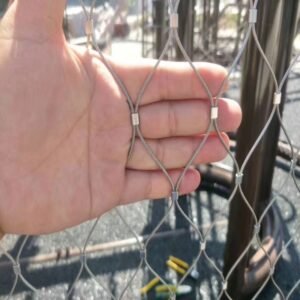

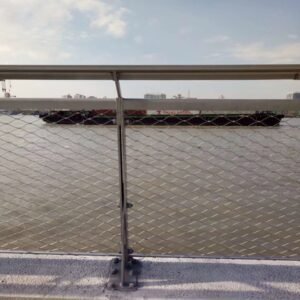


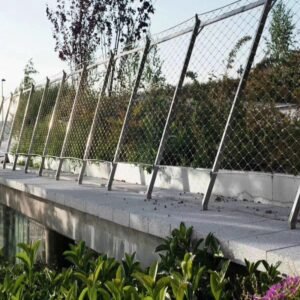
Why is chain link wire mesh as famous as zoo mesh?
- Low cost. Chain link fence is a cheap alternative to steel rope or welded panel fencing. When the quantity of fence is required, the reduced cost will be high.
- Durability. Thick zinc coating or PVC coating gives superior resistance against rains, snows and frost.
- Security. A smooth surface will not hurt the animal or the visitors.
- Easy installation and short project time.
Description
- Chain link mesh is a woven fence of galvanized or PVC coated steel wires to reduce rust and corrosion. The wires run vertically and are bent into a zig-zag pattern forming a diamond aperture. With its durability, low cost, less maintenance and security, chain link fence has been an essential member of zoo wire mesh. Our chain link fence is fabricated by heavy steel wire, equivalent to a welded mesh panel or steel rope mesh.
- Apart from forming zoo enclosures for tigers, leopards and lions, chain link wire mesh are more popular as security fencing for residential, commercial and prison fencing systems.
Chain Link Fence For Zoo Mesh Specification
| Opening |
1″ |
1.5″ |
2″ |
2.25″ |
2.4″ |
2.5″ |
3″ |
4″ |
| 25mm |
40mm |
50mm |
55mm |
60mm |
65mm |
76mm |
100mm |
| Wire diameter |
18#-7# |
| 1.20mm-5.00mm |
| Length of the roll |
1.0m-50m |
| Width of the roll |
0.5m-5.0m |
| Materials and specifications can be made according to customers’ specific requirements. |
Packing terms
- chain link fence zoo mesh and post all bulk in the container
- Panel with pallet (steel or wooden material) post packing using bubble film bulk in the container
- chain link zoo mesh and post all packing with pallet in the container
- All the clips and caps packed in the carton box
Application of Zoo Mesh
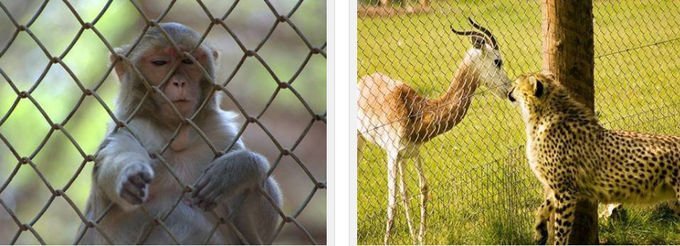
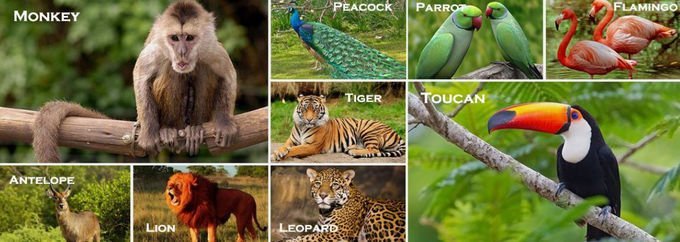
Factors effect Zoo Mesh Cost
- Material Type: The type of material used for zoo mesh significantly impacts its cost. Common materials include stainless steel, galvanized steel, and aluminum. Stainless steel, known for its durability and corrosion resistance, tends to be the most expensive option but offers long-term cost-effectiveness due to its longevity and low maintenance requirements.
- Mesh Size and Density: The size and density of the mesh determine the amount of material required for construction. Finer meshes with smaller openings typically cost more due to the increased precision and material needed for manufacturing. Additionally, denser meshes, which provide greater security and containment for animals, may incur higher costs compared to looser configurations.
- Customization Requirements: The extent of customization needed for the zoo mesh can significantly impact its cost. Custom shapes, sizes, and configurations tailored to specific enclosures or animal species may require specialized manufacturing processes, leading to higher expenses compared to standard, off-the-shelf mesh options.
- Installation Complexity: The complexity of installing zoo mesh can influence overall costs. Factors such as the terrain, accessibility, and size of the enclosure can affect installation time and labor requirements. Enclosures with irregular shapes or challenging topographies may necessitate custom installation methods, potentially increasing project expenses.
- Structural Support: Proper installation of zoo mesh often requires robust structural support systems, such as steel frames or tensioning cables. The design and engineering of these support structures, along with the materials used, contribute to overall project costs. Larger enclosures or those housing larger animals may require more extensive support systems, adding to expenses.
Conclusion
In conclusion, the cost of zoo mesh is determined by a multitude of factors, each playing a significant role in the overall expense of enclosure construction. From material selection to installation complexity, environmental considerations, and regulatory compliance, every aspect must be carefully evaluated to achieve a balance between cost-effectiveness and performance
Related Items










